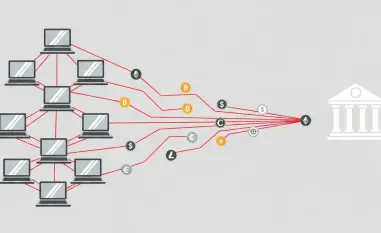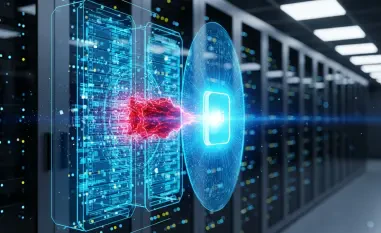The cybersecurity landscape has evolved dramatically over the past decade, with state-sponsored hacking groups emerging as significant threats to national security. Among these, Chinese government-backed hacking groups have garnered particular attention due to their sophisticated techniques and strategic objectives. This article delves into the potential threats posed by these groups to U.S. critical infrastructure and the measures taken by U.S. authorities to counteract them.
The Rise of Chinese Hacking Groups
The “Typhoon” Family of Hackers
Chinese hacking groups, collectively referred to as the “Typhoon” family, have been identified as some of the most formidable cyber adversaries. Their meticulous preparation and long-term infiltration efforts often target critical infrastructure sectors such as energy, transportation, and healthcare. Each sub-group within the Typhoon family possesses specialized skills and objectives, making them a versatile and persistent threat. These sub-groups operate with a high degree of autonomy yet align their activities with broader strategic goals set by the Chinese government.
The Typhoon family’s proficiency in cyber espionage and sabotage has only increased over time. These groups leverage advanced techniques such as zero-day exploits and spear-phishing campaigns to compromise networks and gather sensitive information. What sets them apart is their ability to remain undetected within a network, sometimes for years, extracting valuable data and laying the groundwork for future cyberattacks. The Typhoon family’s capabilities are not limited to stealing information but extend to potentially disrupting or destroying critical systems, posing serious risks to national security and public safety.
Strategic Objectives and Capabilities
The primary objective of these Chinese hacking groups is to gather intelligence and prepare for potential cyberattacks that could cripple U.S. infrastructure. Their capabilities have evolved from simple data theft to more sophisticated operations, including the ability to disrupt or destroy critical systems. This shift in focus underscores the strategic nature of their activities, which are often aligned with broader geopolitical goals. The Chinese government views these cyber activities as an extension of its national power, aiming to weaken adversaries while bolstering its own strategic position.
One notable example of this strategic approach is the targeting of the energy sector. By compromising energy infrastructure, Chinese hackers could theoretically disrupt power supplies and create widespread economic and societal chaos. Similarly, attacks on the transportation sector could halt the movement of goods and people, causing significant disruption and economic loss. The healthcare sector is another prime target, where attacks could jeopardize patient safety and compromise sensitive medical data. These examples illustrate how the strategic objectives of Chinese hackers are intertwined with the potential for catastrophic outcomes that extend beyond mere espionage.
Notable Incidents and Their Implications
High-Profile Cyberattacks
Several high-profile cyberattacks attributed to Chinese hackers have highlighted the severity of the threat. For instance, the 2015 breach of the U.S. Office of Personnel Management (OPM) exposed sensitive information of millions of federal employees, demonstrating the hackers’ ability to access and exploit critical data. Such incidents underscore the potential for significant damage if these groups were to target critical infrastructure directly. The OPM breach revealed the extensive reach and precision of Chinese cyber operations, which can identify and exploit vulnerabilities in essential government systems.
Another significant incident was the 2018 revelation of a supply chain attack on several U.S. companies. Chinese hackers reportedly inserted malicious code into hardware components, allowing them to infiltrate networks and steal valuable intellectual property. This attack demonstrated the evolving tactics of Chinese cyber groups, moving from direct attacks to more insidious methods that exploit the interconnected nature of global supply chains. These high-profile incidents serve as stark reminders of the continuous and adaptive nature of the threat posed by Chinese hackers.
Long-Term Infiltration Efforts
Chinese hacking groups are known for their patience and persistence, often spending months or even years infiltrating target networks. This long-term approach allows them to gather valuable intelligence and position themselves for future attacks. The discovery of such infiltration efforts has prompted U.S. authorities to enhance their cybersecurity measures and develop more robust detection and response strategies. Long-term infiltration efforts often go unnoticed, allowing hackers to operate within networks without raising immediate suspicion.
This patient and persistent approach is exemplified by the extensive reconnaissance missions carried out by these groups. By thoroughly studying their targets, Chinese hackers can identify critical systems and vulnerabilities, tailoring their attacks to maximize impact. This methodical approach enables them to plan and execute highly effective cyber operations. The ability to maintain a long-term presence within a network also allows them to adapt to changing security measures and continue their activities undetected. As a result, U.S. authorities have had to adopt more proactive and sophisticated approaches to defend against these persistent threats.
U.S. Countermeasures and Response
Government Initiatives
In response to the growing threat, U.S. authorities have implemented several initiatives aimed at bolstering cybersecurity defenses. These include the establishment of the Cybersecurity and Infrastructure Security Agency (CISA) and the development of the National Cyber Strategy. These efforts are designed to enhance coordination between government agencies and the private sector, ensuring a unified response to cyber threats. The creation of CISA, in particular, represents a significant step toward consolidating and streamlining the nation’s cybersecurity efforts.
CISA’s mission includes securing federal networks, protecting critical infrastructure, and collaborating with international partners to combat cyber threats. The National Cyber Strategy outlines a comprehensive framework for improving the country’s cybersecurity posture, emphasizing resilience, public-private collaboration, and the development of advanced defensive capabilities. These initiatives reflect a recognition of the evolving nature of cyber threats and the need for a coordinated, multi-faceted response. By aligning resources and expertise, the U.S. government aims to create a robust defense against state-sponsored hacking groups like those backed by China.
Collaboration with Private Sector
Recognizing that much of the nation’s critical infrastructure is owned and operated by the private sector, U.S. authorities have emphasized the importance of public-private partnerships. By sharing threat intelligence and best practices, both sectors can work together to strengthen their defenses and mitigate the risk of cyberattacks. This collaborative approach is essential for addressing the complex and evolving nature of the threat landscape. The private sector holds significant expertise and resources that, when combined with government efforts, can create a more resilient cybersecurity environment.
One example of this collaboration is the Information Sharing and Analysis Centers (ISACs), which facilitate communication between industry stakeholders and government entities. ISACs provide a platform for sharing cybersecurity information, including threat intelligence and mitigation strategies, helping organizations improve their defenses. Additionally, the U.S. government has established several cybersecurity grant programs to support private sector initiatives aimed at enhancing critical infrastructure security. These collaborative efforts are vital in ensuring that the private sector can effectively respond to and recover from cyber incidents.
The Future of Cybersecurity
Emerging Threats and Trends
As Chinese hacking groups continue to refine their techniques and expand their capabilities, the threat to U.S. critical infrastructure is likely to grow. Emerging technologies such as artificial intelligence and quantum computing could further enhance the effectiveness of cyberattacks, making it imperative for U.S. authorities to stay ahead of the curve. Continuous investment in research and development, as well as the adoption of cutting-edge cybersecurity solutions, will be crucial in this regard. The rapid pace of technological advancement presents both opportunities and challenges in the fight against cyber threats.
Artificial intelligence (AI) can be leveraged by both attackers and defenders, creating a constantly evolving battlefield. While AI can enhance the ability of security systems to detect and respond to threats, it can also be used by hackers to develop more sophisticated and adaptive attacks. Quantum computing, still in its early stages, has the potential to revolutionize cybersecurity. However, it also poses significant risks, as quantum algorithms could break current encryption standards, exposing sensitive data to malicious actors. Staying ahead of these technological trends requires a proactive approach and a commitment to innovation in the cybersecurity field.
The Role of International Cooperation
Over the past decade, the cybersecurity landscape has undergone significant changes, with state-sponsored hacking groups becoming major threats to national security. Among these groups, those backed by the Chinese government have attracted notable attention due to their advanced methods and strategic goals. This article explores the potential dangers these groups pose to U.S. critical infrastructure and the actions taken by U.S. authorities to address them. These Chinese hacking groups employ highly sophisticated techniques to breach networks, steal sensitive data, and even disrupt critical systems. Their skills in cyber espionage and cyber warfare make them a formidable threat. In response, U.S. authorities have implemented various measures to protect critical infrastructure. These measures include strengthening network defenses, enhancing cybersecurity protocols, and fostering international cooperation. Additionally, there is an ongoing effort to develop new technologies and strategies that can detect and counteract these advanced cyber threats effectively.













